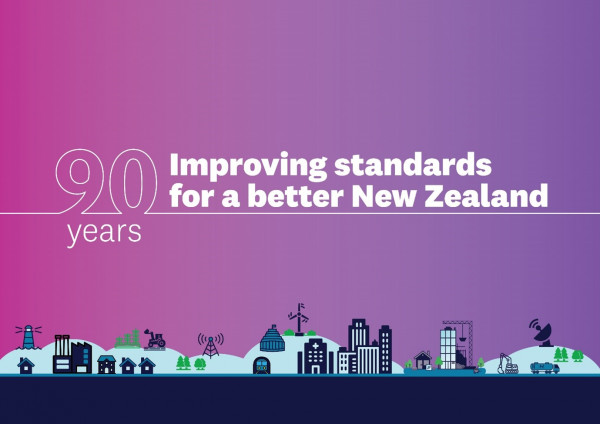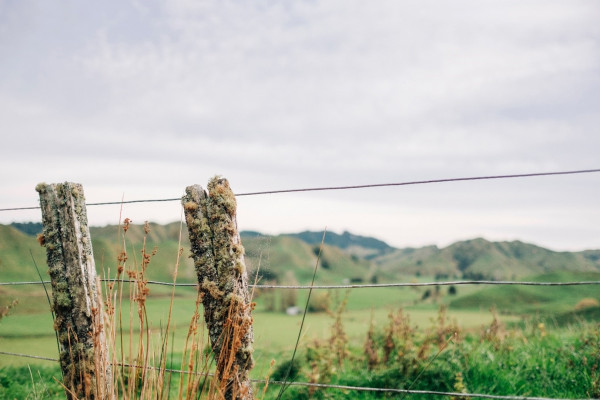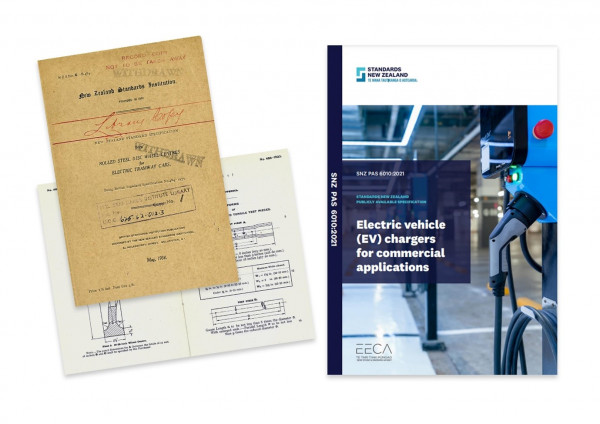90 years of improving standards for a better New Zealand
2022 marks the 90th year since New Zealand’s first dedicated council gathered to set the path for raising standards.
From a standard for no. 8 wire in the 1930s to helping build the framework for future technologies, Standards New Zealand’s journey reflects Kiwi ingenuity, guiding and shaping the changing needs of industry and global cooperation.

From factories to future energies, standards have adapted over the decades to meet the changing demands of users.
Initiated by devastation
Like a phoenix from the ashes, Standards New Zealand formed out of devastation. The Great Depression, falling agricultural export prices, a crippling summer drought, and the Napier quake of 3 February 1931 had left the country reeling.
256 lives were lost in the earthquake, and thousands were injured. The city was broken and, in a world already filled with hardship, there was a sudden need to rebuild. This prompted a thorough review of New Zealand building practices, which were found to be inadequate. As a result, national building guidelines, the forerunner of today’s Building Code, were established to bring standards to new construction projects. Here, standards were setting the direction for what was considered the right way to build.
Based on British
With support from the British Standards Institution (BSI), an organisation known as the New Zealand Standards Institution (NZSI) was formed in 1932 and the Council’s first meeting took place on 7 July 1932.
The early organisation maintained close ties with BSI, which had supplied previous British standards. The first New Zealand standard, NZSS 1 (BSS 467:1932) The colouring and marking of foundry pattern, was based on a British standard – and the adoption and modification of international standards still takes place today,
New Zealand-centric
Standards had to reflect the distinct needs of New Zealand’s limited infrastructure, rural needs, and geological risks. The following six years saw a name tweak from ‘institution’ to ‘institute’ and the development of NZSI as an independent body within the Department of Scientific and Industrial Research. In 1938, the first original New Zealand standard, NZSS 143 Galvanised (zinc coated) steel fencing wire, otherwise known as no. 8 wire, was published.

The ubiquitous number 8 wire was the subject of New Zealand’s first original standard that wasn’t an adoption of an international standard.
Small origins, international impact
From its humble origins in the wake of devastation, the national standards body has grown into a contributor towards international standards, the kaitiaki of thousands of New Zealand, international and joint Australia/New Zealand standards, and an organisation trusted to support change initiatives with standards development and adoptions.
Standards New Zealand has gone by several names over its lifetime. It has survived world wars, evolved with the digital age, and responded to the ever-changing sectors that it exists to support. As an inaugural member of the International Organization for Standardization (ISO) in 1947, we now form part of a global network of 176 national standards bodies working to break down barriers to trade, promote interoperability, and share good practice.
Working with all sectors to do the right thing
Today, a team of 30 staff supports the hundreds of volunteer committee members who are subject matter experts developing the content for standards. We’re based in the Ministry of Business, Innovation and Employment (MBIE) so that we can collaborate with regulators to help people do the right thing through standards’ good practice.
As part of our mahi on New Zealand’s big issues, we work with industry leaders from representatives in large businesses and small to medium enterprises (SMEs), to associations, regulators and certifiers in diverse sectors. We facilitate the creation of international export-related standards for primary industries, and society-changing energy and environment standards that help towards meeting national carbon reduction targets. We develop safety-focused standards for building and construction, culturally inclusive standards for health delivery, and security standards for data management. Our users and commissioners represent those with a national lens in central government and those implementing regionally at local government.
Standards have been made more accessible to those who need them through the generous sponsorship of standards by Building System Performance (BSP), the Energy Efficiency and Conservation Authority (EECA), WorkSafe – Energy Safety, and the Ministry of Health.

Wheels in worlds apart. A 1934 adoption of a British standard for tram wheels and a 2021 guideline for electric vehicle chargers.
You benefit from standards, guaranteed
Through innovation and improvements, the current catalogue of standards has come a long way from the first documents. They now cover significant aspects of human progress and environmental protection, from the quality of the homes we live in, to the reliability of life-saving medical equipment, from accountability on environmental practice to ensuring safe water quality, and from assuring protection from the sun to equipment specifications to map the stars. Standards have played a hidden role in society for four generations of New Zealanders.
What’s clear is that we’ve grown into an organisation that helps protect the safety, quality, and interoperability of everything New Zealanders use. Whether you’re a plumber, a parent, a farmer, or a homeowner, you’ve benefitted from standards and all the work that goes into them.
Discover more about our 90-year journey via our timeline.
Ninety years of improving standards for a better New Zealand
